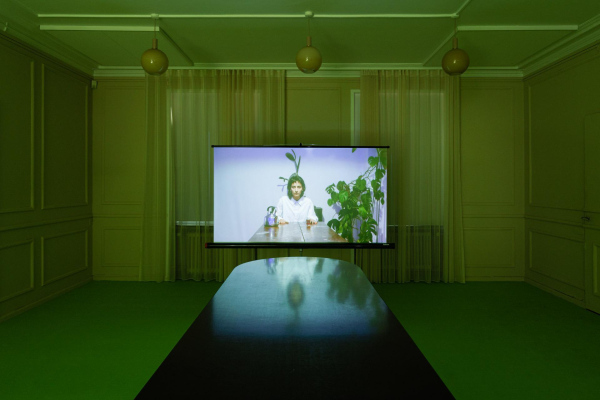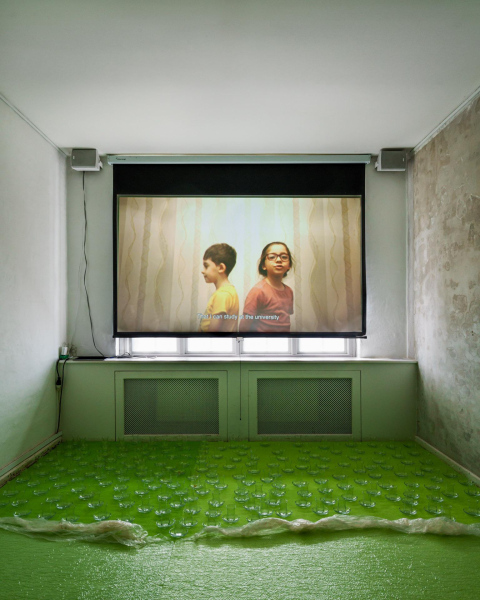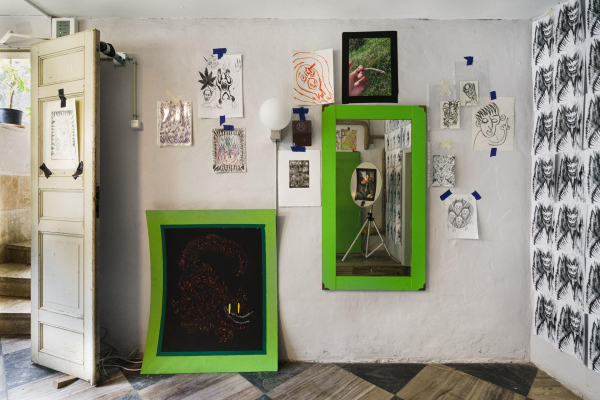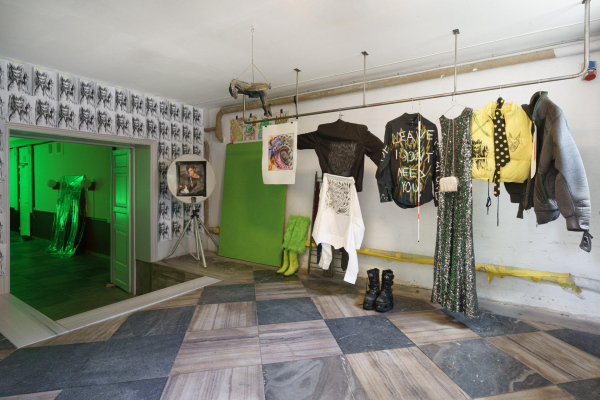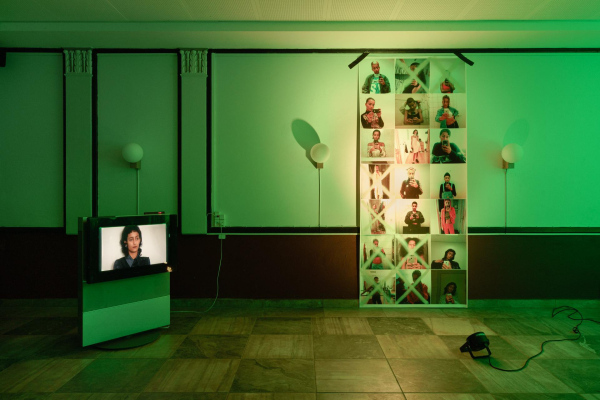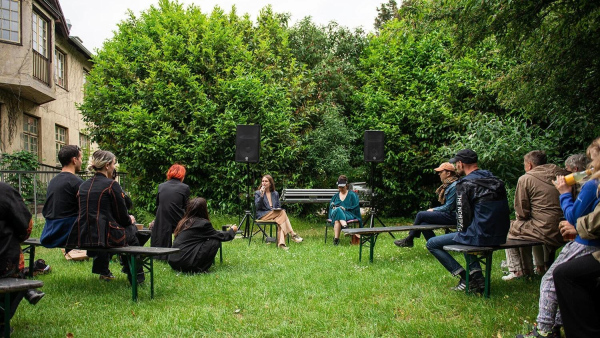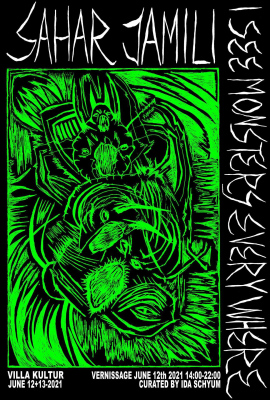-
I SEE MONSTERS EVERYWHERE
Solo show, Villa Kultur, Copenhagen, 2021
Press Release, May 2021
With metal installations and confronting video works, visual artist Sahar Jamili (b. 1990) addresses Danish racism and celebrates those who survive it. In the current exhibition at Villa Kultur in Østerbro, visitors move from room to room through a negotiation of identity. At the same time, white viewers are reminded that they have no right to judge anyone at all.
In the exhibition I SEE MONSTERS EVERYWHERE, Sahar Jamili underscores the domestic atmosphere of the more than 150-year-old upper-class villa, Villa Kultur.
As if arriving at a private home, visitors are asked to remove their shoes in the entrance hall. But next to the piles of shoes, a sound piece confronts listeners with racist prejudices projected onto Jamili. In the wake of the Danish Prime Minister’s comments about brown individuals in puffer jackets, the work makes it clear that white feelings of insecurity have deeply harmful consequences for those who face such prejudices. Welcome inside.
Villa Kultur has been transformed with a scenography that reveals how the home, for families with non-Danish ethnic backgrounds, can contain a portal to another world. In a room with a bright green carpet, the video work besdi plays. Disguised as the artist’s father, Jamili rhythmically strikes a table. Besdi means “enough is enough” in Azerbaijani, and the strikes symbolize the boundaries imposed by the father. But with an unwavering gaze fixed on the viewer, the blows also become a challenge to the prejudices carried into the space.
Although the powerful father figure in the video evokes the patriarchal structures that shaped Jamili’s upbringing, the exhibition does not reject that background. Visitors must bow beneath a metal structure to enter a smaller adjoining room. Here, a multitude of teacups, a pile of blankets, and a video portraying the women in Jamili’s family in Azerbaijan are encountered. Shot with a handheld camera, the video offers an intimate, intergenerational portrait, capturing the ambivalence of being both a witness to one’s own culture and feeling a deep love and closeness to family.
Through this ambivalence, a desire emerges to reconcile an Azerbaijani heritage with a Danish passport—without compromise. Fragments of white racism, an Azerbaijani patriarch, and intimate encounters with familial histories accumulate into monsters, which appear in the penultimate room as images mounted on metallic structures and a satellite dish.
The final room features a classic B&O television displaying a series of clips with various personas—all expressions of Jamili. Emerging from the young Danish queer BIPOC (Black, Indigenous, People of Color) scene are new and powerful identities. This evolution is underscored by a metallic chandelier adorned with hair extensions. In Azerbaijan, the chandelier is a symbol of status and a staple of interior design. Jamili’s version merges the divide between being a Nørrebro punk and an Azerbaijani youth with green extensions—an assertion of identity constructed from fragments.
The exhibition is part of Villa Kultur’s program “Future Artists and Cultural Creators” and is curated by Ida Schyum, with support from the Grosserer L.F. Foght Foundation, The Obel Family Foundation, and the Østerbro Local Committee. In connection with the exhibition, translator, external lecturer, and critic Nazila Kivi will be in conversation with curator Ida Schyum about Sahar Jamili’s work, with a special focus on the monstrous.
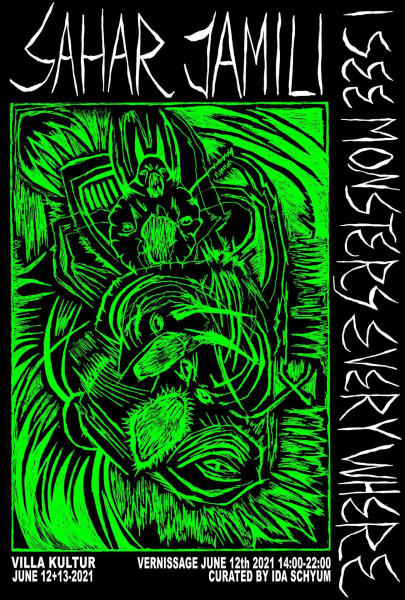
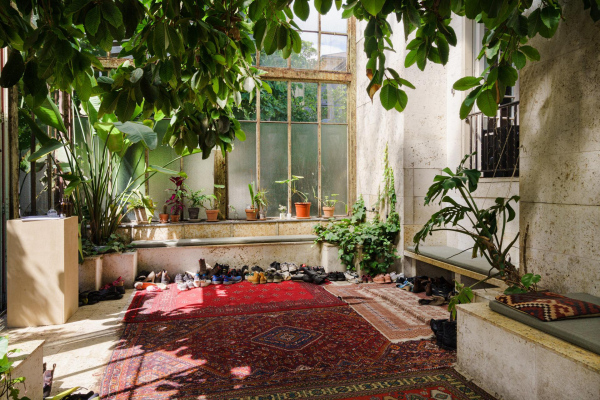
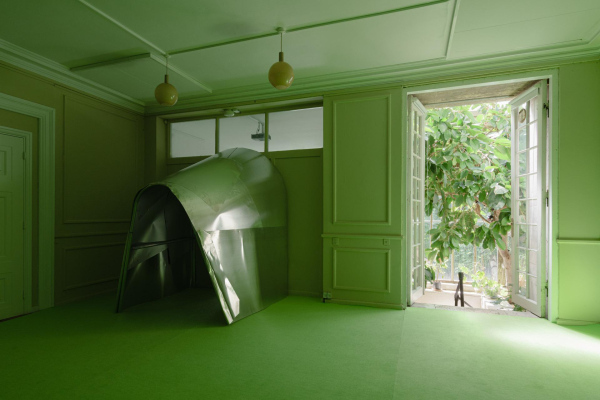
-
-
-
-
